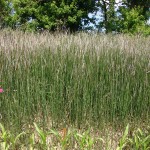As reported by NASS on May 7, 2012
SCATTERED SHOWERS PROVIDE LITTLE RELIEF
Unusually high temperatures and sunny days combined to minimize the benefits of scattered showers that fell in many areas across the state. Reporters in all regions reiterated the need for a general soaking rain. Row crops were holding on with three-fourths of the corn and winter wheat acres rated in good-to-excellent condition. Crop development continues to advance well ahead of the normal pace. Pastures declined some from the previous week, but cattle were reported to be mostly good condition. Other farm activities this week included post-emergence herbicide and fertilizer applications, cutting hay, scouting for insects and diseases, harvesting strawberries, and continued assessment of freeze damage on fruit crops. Continue reading →



